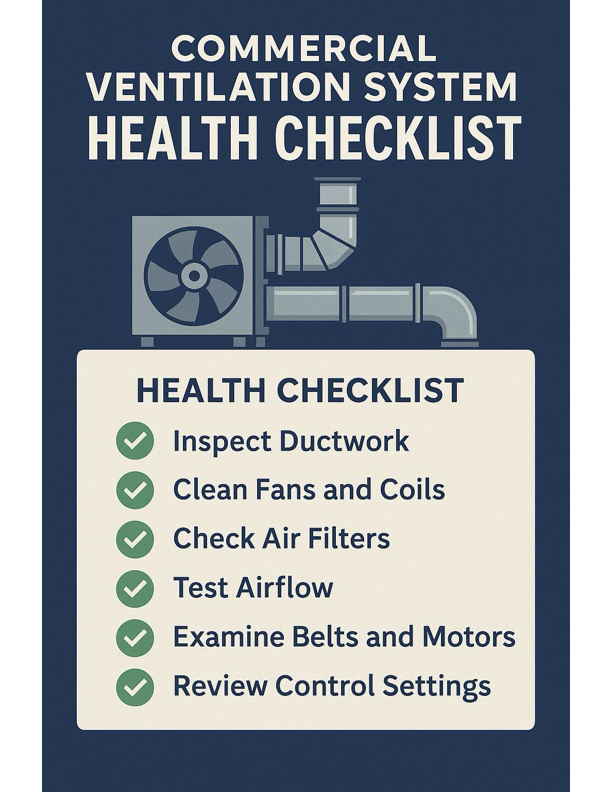Your kitchen might run on heat, hustle, and hard work—but it breathes through its ventilation system. Without it, everything from food quality to worker safety takes a hit. And while it’s easy to focus on daily operations, overlooking the long-term health of your ventilation setup is asking for trouble. Poor air quality, fire hazards, code violations, and equipment failures don’t show up overnight—they build up over time.
Here’s how to get proactive about assessing and maintaining your commercial kitchen’s ventilation system.
1. Start with a Visual Inspection
Set a regular schedule to check for obvious wear and tear. Look for:
-
Grease buildup in hoods and ducts
-
Corroded or damaged ductwork
-
Exhaust fans with excessive dust or grime
-
Loose, rattling components
If you see gunk where clean metal should be, or if anything’s looking worn, it’s a red flag.
2. Check Airflow and Performance
Your system should move air effectively—not just make noise.
-
Is the kitchen smoky or stuffy during service?
-
Are staff constantly hot or complaining about odors?
-
Does your make-up air system keep balance, or are doors slamming and air whistling through cracks?
Have a professional use an anemometer or balometer to measure airflow. Performance should match the specs of your original design—or better.
3. Monitor Energy Efficiency
As ventilation systems age, they can drag down your utility efficiency.
-
Track energy usage over time. Spikes may signal blocked filters, motor strain, or poor fan performance.
-
Consider installing variable speed drives (VFDs) or demand-controlled kitchen ventilation (DCKV) systems if you haven’t already.
Think of it as an EKG for your kitchen—watch for erratic patterns.
4. Review Cleaning and Maintenance Logs
NFPA 96 doesn’t just recommend regular cleaning—it mandates it. Go back through your logs:
-
When was the last full hood and duct cleaning?
-
Are filters being cleaned or replaced on schedule?
-
Is your cleaning crew certified or trained in commercial kitchen ventilation systems?
If the paper trail looks spotty, it probably means the system is too.
5. Test for Contaminants
High levels of carbon monoxide or airborne grease aren’t just unhealthy—they’re dangerous.
-
Schedule indoor air quality testing periodically
-
Consider sensors for CO, VOCs, and temperature spikes in high-heat zones
A well-maintained system should keep air clean and breathable, no matter how busy the kitchen gets.
6. Inspect Fire Suppression Integration
Your ventilation system is a frontline defense against fire, especially with grease-heavy appliances.
-
Test your fire suppression system regularly
-
Ensure nozzles are aimed and functioning correctly
-
Verify that activation triggers the exhaust fan to shut down (as required)
Don’t find out during an emergency that your system was out of sync.
7. Get a Professional System Audit
Even with in-house checks, nothing beats a professional audit. A licensed technician can:
-
Benchmark performance against current codes and best practices
-
Identify hidden duct obstructions or fan inefficiencies
-
Recommend upgrades that future-proof your operation
Aim to do a full system assessment at least every 3–5 years—or sooner if you’ve made major equipment changes.
Final Thoughts
The long-term health of your commercial kitchen ventilation system isn’t just about keeping things clean—it’s about keeping things safe, efficient, and up to code. Think of it like a checkup for your kitchen’s lungs. Catch small issues early, and you’ll avoid expensive overhauls or worse: system failure at the worst possible time.
Make inspections and audits part of your culture, not an afterthought. Your staff, your bottom line, and your food quality all depend on it.

